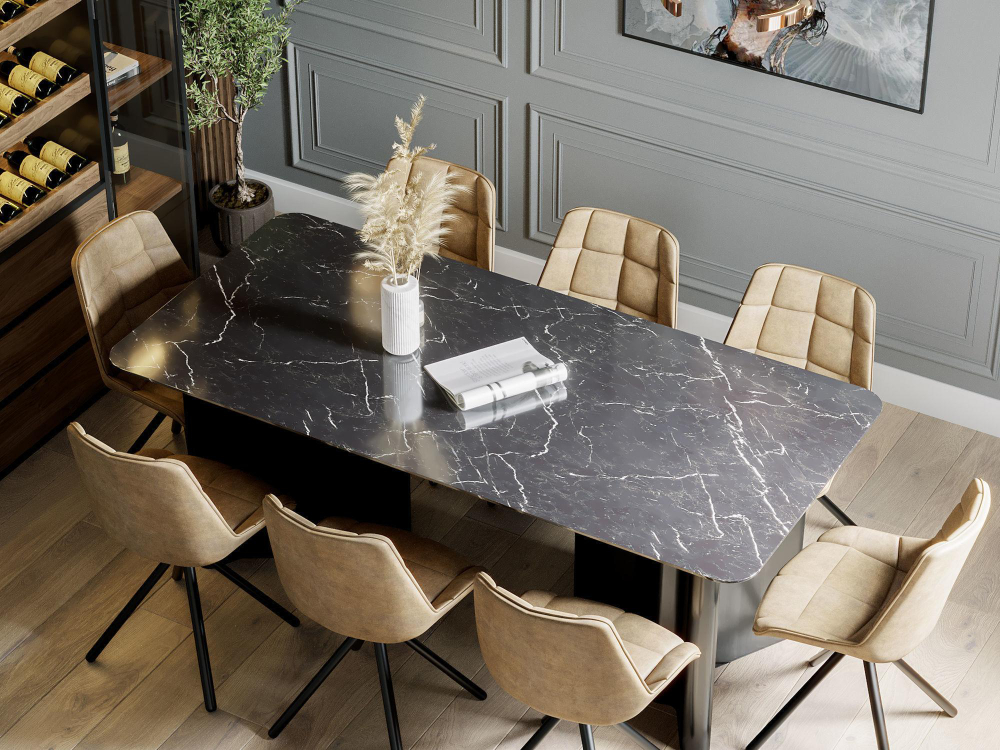The dining table is often the centerpiece of a home, where family and friends gather to share meals, conversations, and memories. Choosing the right size dining table for your space is essential for both functionality and aesthetics.
Whether you have a spacious dining room or a cozy breakfast nook, selecting a table that fits well and suits your needs can enhance the overall look and feel of your home. This guide will explore some essential tips on how to pick the right size dining table for your space.
1. Measure Your Space
Before you start shopping for dining tables, measure your dining area to determine how much space you have available. Consider the length, width, and height of the room, as well as any architectural features like windows, doors, or alcoves that may affect the layout. Be sure to leave enough clearance around the table for chairs to be pulled out comfortably and for people to move around freely.
2. Consider the Shape of Your Room
The shape of your dining room can influence the size and shape of the dining table you choose. For square or rectangular rooms, a similarly shaped table often works best, maximizing seating capacity and visual harmony. In long, narrow rooms, consider a rectangular or oval table to complement the space and create a balanced look. Round tables are versatile and work well in smaller or square rooms, providing a cozy, intimate dining experience.
3. Determine Seating Capacity
Consider how many people you typically need to seat at your dining table on a regular basis. This will help you determine the appropriate size of the table and ensure that everyone has enough space to dine comfortably. As a general rule of thumb, allow at least 24 inches of width per person for elbow room. For rectangular tables, a good guideline is to add 12 inches to the length for each additional person you want to seat.
4. Factor in Table Shape and Size
The shape and size of the dining table play a crucial role in determining its suitability for your space. Rectangular tables are classic and versatile, offering ample seating and accommodating larger gatherings. Square tables are ideal for smaller rooms or intimate settings, while round tables promote conversation and social interaction. Choose a table size that fits comfortably within your dining area without overwhelming the space or making it feel cramped.
5. Allow for Clearance
Ensure that there is enough clearance around the dining table for people to move freely and pull out chairs without obstruction. Allow at least 36 inches of clearance between the table and any walls or furniture to create a comfortable flow of traffic. If your dining area is part of an open-plan layout, consider the overall circulation and sightlines to other areas of the room.
6. Consider Extension Options
If you occasionally entertain large groups or host family gatherings, consider a dining table with extension leaves or expandable features. Extension tables offer flexibility and versatility, allowing you to adjust the size of the table to accommodate more guests when needed. Keep in mind the additional space required to expand the table and ensure that your dining area can accommodate the extended size comfortably.
7. Think About Proportions and Visual Balance
When selecting a dining table, consider the overall proportions and visual balance of your space. Choose a table size that complements the scale of the room and other furniture pieces. Too big of a table might overtake the room, and too little of a table can seem out of place. Aim for a harmonious balance between the table size and the surrounding elements to create a cohesive and inviting dining area.
8. Test Out Different Options
Before making a final decision, consider testing out different table sizes and shapes to see how they fit within your space. Use masking tape or cardboard cutouts to create mock-ups of the table dimensions on the floor, allowing you to visualize the layout and determine the best fit. Take into account factors like ease of movement, seating capacity, and overall aesthetics when evaluating each option.
9. Think Long-Term
Investing in a dining table is a long-term decision, so consider your future needs and lifestyle when making your selection. Choose a table that can accommodate your evolving family size, entertaining habits, and design preferences. Opt for durable materials and timeless styles that will stand the test of time and adapt to changing trends and tastes.
10. Personalize Your Choice
Ultimately, the right size dining table for your space is one that reflects your personal style, meets your functional needs, and enhances the overall ambiance of your home. Choose a table that you love and that complements your decor aesthetic, whether it’s rustic farmhouse, modern minimalist, or traditional elegance. Personalize your choice with finishes, materials, and design details that resonate with your lifestyle and preferences. Check The Hairpin Leg Company to learn more tips.
Select the Right Size Dining Table
Selecting the right size dining table for your space requires careful consideration of factors like room dimensions, seating capacity, table shape, and clearance requirements. By measuring your space, determining seating needs, considering table proportions, and testing out different options, you can find a dining table that fits seamlessly into your home and enhances your dining experience.

